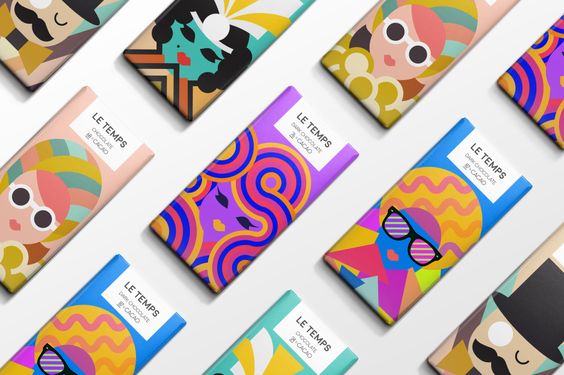Threads: The Rising Social Media Competitor Redefining Brand Presence
When the popular e-commerce company Nykaa joined ‘Threads’, it didn’t post about its product offerings. Instead, it started with a quippy one-liner about the app itself.
Similarly, Netflix India didn’t just put up a boring old post about upcoming shows. Instead, it posted the iconic picture from the film Om Shanti Om where the ‘thread’ from Shanti’s dupatta gets stuck in Om’s bracelet.
Similarly, Zomato posted a graphic of a ‘jalebi’ and posted “threads, now also available on Zomato”. In fact, this is the casual, unfiltered approach that several brands are using on Threads — becoming a part of relevant cultural conversations instead of directly advertising.
In this rapidly evolving social media landscape, Meta’s newest platform ‘Threads’ has made an explosive entrance, amassing a staggering 100 million users within just one week of its launch. Positioned as a formidable competitor to Twitter, what sets it apart from the bird app itself is the refreshing change of a friendly, conversational tone and a presence among an already engaged audience — both of which are pretty hard to come by on Twitter.
And it is these two reasons that also make it an extremely appealing social media platform for brands and businesses seeking to expand their digital footprint.
 How brands are threading the needle
How brands are threading the needle
With its unique emphasis on fostering close-knit communities, Threads has proven to be an attractive platform for businesses eager to engage with their audiences in new and creative ways. What distinguishes Threads from other social networks is the absence of overt selling and traditional advertising. Instead, brands are embracing a more subtle approach, showcasing their personalities and curating humorous content to form deeper connections with their followers.
This in itself is a result of the weird way in which Threads has grown. It’s built backward. On other social media platforms, brands have to build a presence from the ground-up, however here they were launched with a ready audience. Given, that it is just a percentage of their audience on Instagram itself, it is still a lot more than any brand or influencer would expect on a completely new platform. And this put brands at an advantage — they got a more intimate platform to engage with their audiences and steer the conversation in a direction that they want instead of being completely ruled by algorithms. The brands, as a result, have gotten off to a good start, and most of them are getting way more engagement here than on Twitter, where they may have existed for longer and would probably have had more followers.
For instance, homegrown makeup brand Try Sugar has found success by adopting a casual and unfiltered communication style on the app. They focus on posting memes and have already amassed over 100k followers on the platform. By posting about relevant cultural moments and sidestepping direct product promotion, they’ve managed to strike a chord with their audience that not only helps them get higher engagement but also translates into continued growth on and off the platform.
Even smaller brands are adopting this approach — focusing more on authenticity and genuine interactions that resonate with users instead of just posting salesy stuff. And this is one of the best ways of elevating brand loyalty and ultimately leading to increased customer satisfaction and advocacy.

Fostering creativity
But unfiltered conversations and meme culture are just the tip of the iceberg. Several brands have hit it out of the ballpark with innovative marketing techniques. Baskin Robbins, for instance, is posting thematic content, puns, polls, and response threads to other popular brands, skyrocketing their engagement by keeping their audience entertained.
Brands are also more open to collaborating on the platform — even with other brands that would traditionally be competitors. A quirky trend of simply stating one’s own name has emerged, and brands from different industries have joined in, conveying a sense of co-creation and collaboration. Another trend of reposting a thread with an emoji that represents the brand can be seen, and brands globally are participating.
These unconventional strategies not only humanize brands but also build bridges among competitors, fostering a playful and inclusive atmosphere on the platform.

Getting everyone involved
Beyond posting entertaining content, brands have also discovered the potential of Threads as a platform for community engagement and customer involvement. Unlike other platforms where the communication is largely one-sided, Threads allows individuals to interact with brands in a way that was largely unseen before. It’s two-way communication at its finest. Of course, the concept is similar to Twitter but far less saturated, making people feel more like a part of this community around the brand.
By initiating threads dedicated to product feedback, ideation, and discussions, brands are inviting customers to share their opinions and ideas directly. This inclusive approach not only strengthens the bond between brands and their customers but also enables businesses to gain valuable real-time insights to enhance their offerings. The direct influence of customers on the brand’s decision-making process fosters a sense of ownership, loyalty, and pride that isn’t possible to achieve through most other platforms.
Challenges and Opportunities for Brands
While the rise of Threads has been a remarkable sight to witness, the platform is in its very nascent stages and therefore still faces plenty of challenges. The very qualities that make it a great place for brands are the ones that also make it a scary slope for several other brands.
Since the platform is just a few weeks old, it still lacks sophisticated search tools, a chronological feed, and even complete control of what you want to see in your feed. So far, this has hampered seamless user navigation and is potentially limiting growth on the platform.
Another cause for concern is sustaining the attention of the audience on the platform for a long time. Several reports published online now showcase that despite the fact that Threads managed to get to 100 million users within just 5 days, the initial usage surge dropped to half by the end of July. One reason for this could be the presence of so many social media apps in the space that users just don’t know where to go and this means they go back to their default patterns. Another reason of course is that Threads’ user interface is not seamless yet, making it difficult for people to stick around.
But whatever the case, while several brands have become early adopters, posting consistently on threads, several others are cautious and are waiting, testing the waters before they embrace the app. Several traditional businesses are yet to start a Threads account while others have not put in any effort into the content on the app and are just repurposing what they post on other platforms.
Despite these challenges, Threads represents an attractive proposition for advertising dollars. As advertisers and regular users alike grow disillusioned with the toxicity and technical glitches on Twitter, Threads emerges as a potential haven for brands seeking a more positive and brand-friendly environment. The platform’s aversion to politics and news could be a major draw for advertisers, but striking the right balance to retain user engagement while attracting brands will be crucial.
Navigating Uncertainty
As Threads continues to evolve, the dynamics of social media marketing are poised for significant changes. The platform’s success will depend on its ability to balance user interests with the needs of brands and advertisers. Brands and retailers will need to closely monitor the platform’s trajectory to make informed strategic decisions about their marketing channels and strategies. The potential for Threads to challenge Twitter’s market position makes it an enticing platform for businesses, but it also presents risks, particularly in the realm of divisive politics.
Conclusion
The rise of Threads as a social media app has disrupted the industry, attracting millions of users and a wide array of brands seeking to enhance their online presence. By prioritizing authentic interactions, humor, and community engagement, Threads has set itself apart from its competitors but the platform’s success hangs in balance as it largely depends on Meta’s ability to navigate challenges, retain user interest, and strike a balance that appeals to both brands and users. Threads’ influence on social media marketing is undeniable, and as brands and retailers cautiously explore this new frontier, the future trajectory of Threads will determine its lasting impact on the digital landscape.




